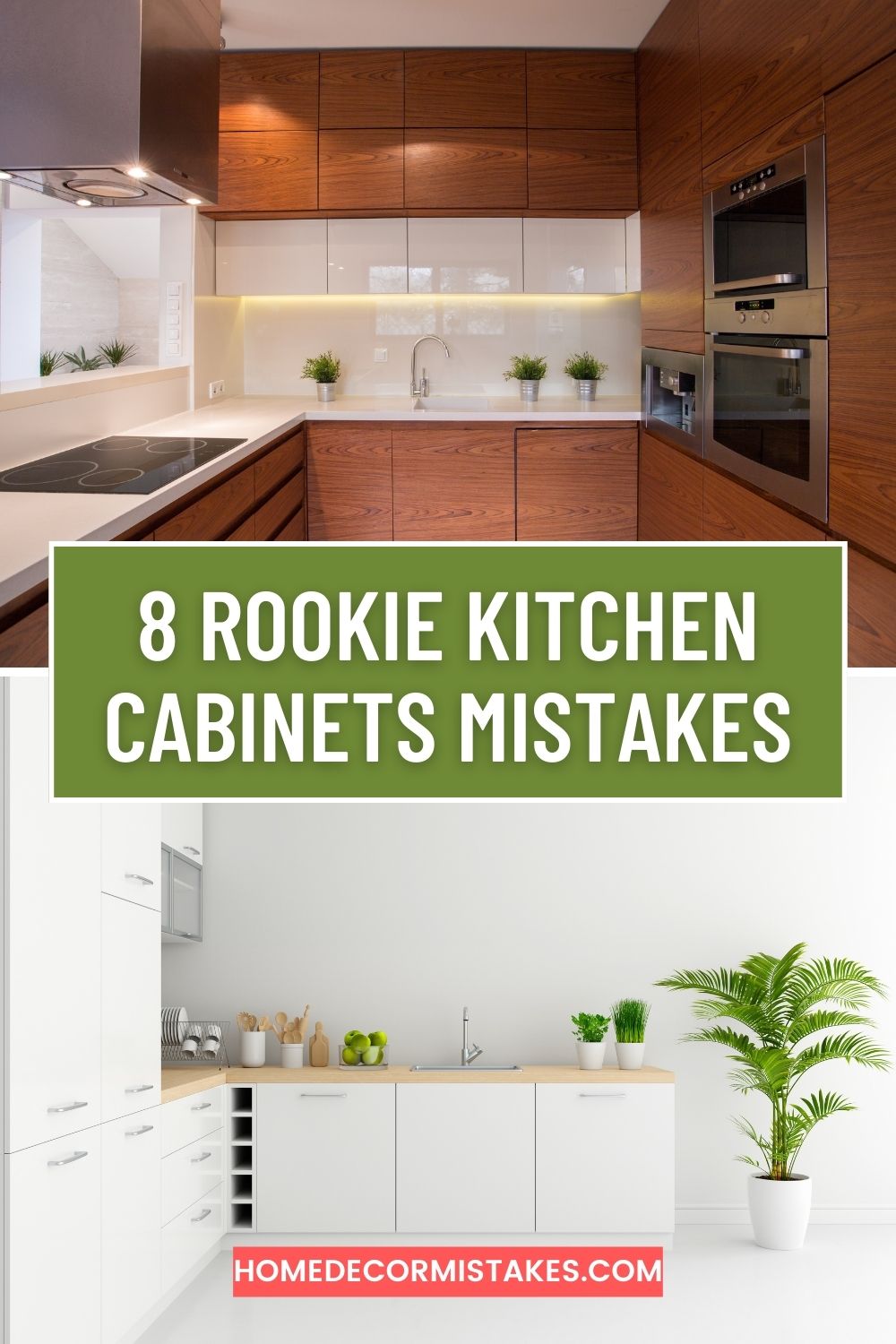8 Kitchen Cabinets Mistakes Everyone Makes (And How to Avoid Them)
Your kitchen is the heart of your home, and the cabinets are its backbone. They store your essentials, help keep your space organized, and significantly influence the aesthetic appeal of your kitchen. However, many homeowners make common mistakes when it comes to kitchen cabinets, affecting both functionality and design. To help you navigate these potential pitfalls, we’ve compiled a list of the eight most common kitchen cabinet mistakes and how to avoid them.
- Mistake 1: Overlooking Practicality for Style
- Mistake 2: Ignoring Your Storage Needs
- Mistake 3: Choosing the Wrong Material
- Mistake 4: Misjudging Cabinet Size and Proportion
- Mistake 5: Poor Layout Planning
- Mistake 6: Overlooking Lighting
- Mistake 7: Neglecting Cabinet Hardware
- Mistake 8: Skimping on Quality
- Conclusion
Mistake 1: Overlooking Practicality for Style
The Problem
It’s easy to get swept up in the latest design trends and forget about the practical aspects of your kitchen cabinets. While sleek, modern cabinets might look stunning, they may not offer the functionality you need for your daily kitchen activities.
The Solution
Balance style with practicality. Choose cabinets that not only complement your kitchen’s aesthetic but also meet your storage and usage needs. Opt for features like pull-out shelves, lazy Susans, and deep drawers to enhance accessibility and convenience.
Mistake 2: Ignoring Your Storage Needs
The Problem
Many homeowners underestimate their storage needs or fail to plan for adequate storage. This can lead to cluttered countertops and a disorganized kitchen.
The Solution
Assess your storage requirements before selecting your cabinets. Take inventory of your kitchen items and consider how you use your space. Customizable cabinets or modular systems can offer flexibility and ensure that you have enough room for everything from small utensils to large cookware.
Mistake 3: Choosing the Wrong Material
The Problem
Cabinets come in a variety of materials, from solid wood to laminate and MDF. Selecting the wrong material can result in durability issues and a mismatch with the rest of your kitchen decor.
The Solution
Research different materials and their properties. Solid wood is durable and timeless but can be expensive. Laminate and MDF are cost-effective alternatives but may not offer the same longevity. Choose a material that fits your budget and complements your kitchen’s overall design.
Mistake 4: Misjudging Cabinet Size and Proportion
The Problem
Improperly sized cabinets can make your kitchen look awkward and disrupt the flow of the space. Overly large cabinets can overwhelm a small kitchen, while too-small cabinets may look out of place in a larger space.
The Solution
Take accurate measurements of your kitchen before purchasing cabinets. Consider the ceiling height, available wall space, and your kitchen’s overall layout. Ensuring your cabinets are proportionate to the size of your kitchen will create a balanced and harmonious look.
Mistake 5: Poor Layout Planning
The Problem
A poorly planned layout can lead to inefficiencies and frustration when using your kitchen. For instance, if your cabinets block key work areas or prevent easy access to essential items, it can disrupt your cooking and cleaning routines.
The Solution
Plan your cabinet layout carefully. Consider the “kitchen work triangle” concept, which involves placing the sink, stove, and refrigerator in a triangular formation for optimal workflow. Ensure that your cabinets do not obstruct this flow and that frequently used items are easily accessible.
Mistake 6: Overlooking Lighting
The Problem
Inadequate lighting can make it difficult to see inside your cabinets and find what you need. Additionally, poor lighting can detract from the overall ambiance of your kitchen.
The Solution
Incorporate a mix of ambient, task, and accent lighting into your kitchen design. Under-cabinet lighting is particularly effective for illuminating work areas and making it easier to see inside cabinets. Consider LED strips or puck lights for a modern and energy-efficient solution.
Mistake 7: Neglecting Cabinet Hardware
The Problem
Cabinet hardware, such as handles and knobs, is often an afterthought. However, the wrong hardware can clash with your cabinet style and affect functionality.
The Solution
Choose hardware that complements the design and finish of your cabinets. Pay attention to the size, shape, and material of the handles or knobs. Additionally, consider the ergonomics—ensure that the hardware is comfortable to use and provides a good grip.
Mistake 8: Skimping on Quality
The Problem
Cutting corners on quality to save money can lead to cabinets that wear out quickly or fail to perform as expected. Poor-quality cabinets can detract from the overall value and appeal of your kitchen.
The Solution
Invest in high-quality cabinets from reputable manufacturers. While it might be tempting to go for the cheapest option, remember that quality cabinets are a long-term investment. They will last longer, function better, and enhance the value of your home.
Conclusion
Avoiding these common kitchen cabinet mistakes can save you time, money, and frustration in the long run. By balancing style with practicality, planning your layout carefully, and investing in quality materials, you can create a beautiful and functional kitchen that meets your needs and stands the test of time. Remember, the right cabinets can transform your kitchen into a space you love and enjoy every day.

